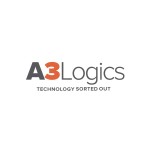For businesses, Electronic Data Interchange, or EDI is an important technology to automate data exchange with suppliers, distributors, and customers through standard electronic messages. However, implementing EDI involves choosing from different options – from direct connections to value-added networks to cloud-based solutions. Making the right choice for your organization is critical for the success of your EDI initiative. The wrong integration method can lead to complications, higher costs, and an inability to achieve your objectives.
Definition of EDI integration
EDI integration is the electronic exchange of business documents using a standard format, allowing businesses to automate routine transactions like orders and invoices, and replacing paper-based documents with electronic ones.
Importance of Electronic Data Interchange (EDI)
Electronic Data Interchange or EDI is an important technology for businesses to automate data exchange and business transactions. EDI enables companies to replace paper documents like purchase orders and invoices with electronic messages.
EDI integration across supply chains can result in cost savings for all participants. Each business handles fewer documents and makes fewer mistakes, reducing expenses. EDI software solutions also help businesses gain faster access to data which enables quicker decision-making.
Types of EDI Integration Methods
The main EDI integration services methods are:
Direct Connection:- A business connects directly to trading partners' systems for low-volume data exchange, but requires configuring connections to each partner.
Value-Added Network:- Businesses connect to a central network provider that routes EDI messages, converting data to standard format for scalable medium-volume data exchange.
Internet-based EDI services:- A provider's website connects businesses via EDI software, serving as a hub for routing messages, ideal for trading partners with high data volumes and real-time communication.
Factors to consider while choosing the right EDI integration method
Here are the key factors to consider while choosing the right EDI integration method:
Evaluating Your Business Needs: Identify EDI integration objectives, such as faster order processing, cost savings, and increased visibility, and understand current manual data exchange processes with partners. Evaluate the security requirements needed like encrypting data in transit and at rest plus any authentication controls. Determine the internal IT capabilities – if there is in-house EDI expertise or reliance on external EDI solution providers.
Comparing Integration Methods: Businesses should compare various integration methods based on factors that matter most to them. These include complexity, cost, performance, scalability, flexibility, and control. For complexity, options like file transfer or value-added networks are simplest to implement while third-party or cloud EDI require less internal effort.
Cost Considerations: Businesses must evaluate the total cost of ownership for various EDI provider options to determine the most economical choice. Upfront and ongoing costs need to be compared.
Cloud EDI has a software-as-a-service model with no upfront software costs. Businesses only pay monthly subscription fees based on the number of users, messages, or trading partners. Overall costs are highly scalable and predictable.
Security and Compliance: EDI integration methods require strong security controls and industry and data protection regulations to ensure the protection of sensitive business data. EDI-managed services like value-added networks, internet-based and cloud EDI pass some security responsibilities to providers but also give access to their expertise and infrastructure. Businesses must thoroughly vet the security capabilities and certifications of external providers.
Scalability and Flexibility: Scalability and flexibility are important considerations for choosing EDI integration services that can adapt to changing business needs over time. In terms of scalability, direct connections are the least scalable since configuring new connections is complex. File transfer has limited scalability. Value-added networks, Internet-based and third-party EDI solutions are more scalable since adding trading partners and growing data volumes mainly require software configuration.
Integration Timeframe: Different EDI integration services have varying timeframes, impacting costs, risks, and schedules. Direct connections have the shortest integration timeframe, while value-added networks and traditional EDI have shorter timeframes. Third-party services and on-premise integration require more time.
Technical Expertise and Resources: EDI integration options require varying levels of technical expertise and resources, impacting costs, timelines, and long-term manageability. Direct connections require minimal expertise, while traditional solutions require moderate expertise for customization and troubleshooting.
Vendor Selection: Choosing the right EDI service is crucial for successful integration. Businesses should evaluate vendors based on technical capabilities, customer service, security, and cost. Technically, vendors should demonstrate their solutions' performance, customer service, and security. Ensure vendors follow industry best practices and have robust controls.
Integration Testing and Support: Thorough testing of EDI services is crucial to prevent operational defects. Businesses should cover basic connectivity, data mapping, error handling, performance, and security controls. Implementing EDI integration in stages reduces risks and troubleshooting efforts.
Conclusion
To select the optimal EDI integration method for your business, evaluate your requirements, constraints, priorities, and risk appetite. Compare providers based on functionalities, costs, expertise, security, scalability, flexibility, and control.
For more details: https://www.a3logics.com/blog/choose-the-right-edi-integration-method/





Comments